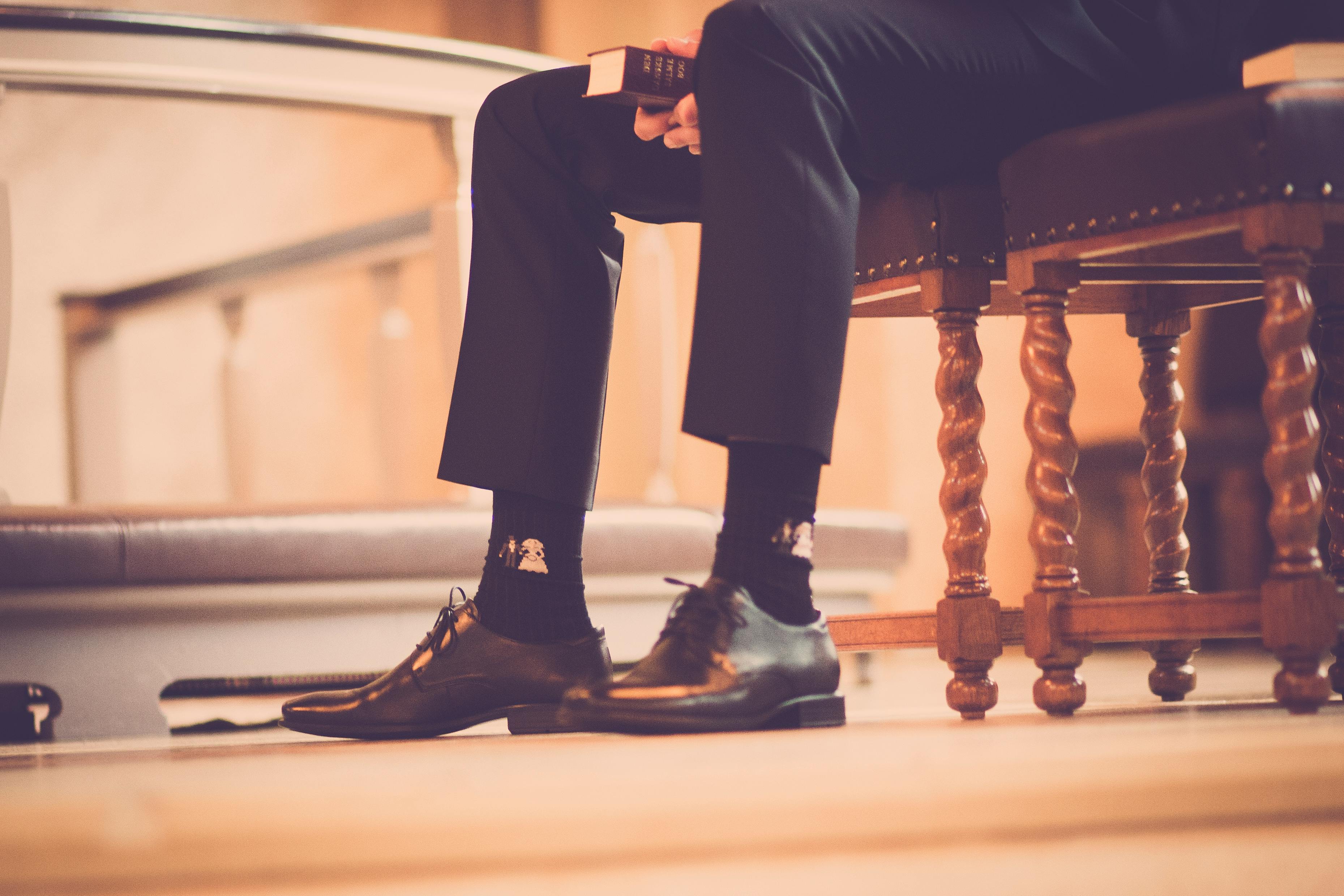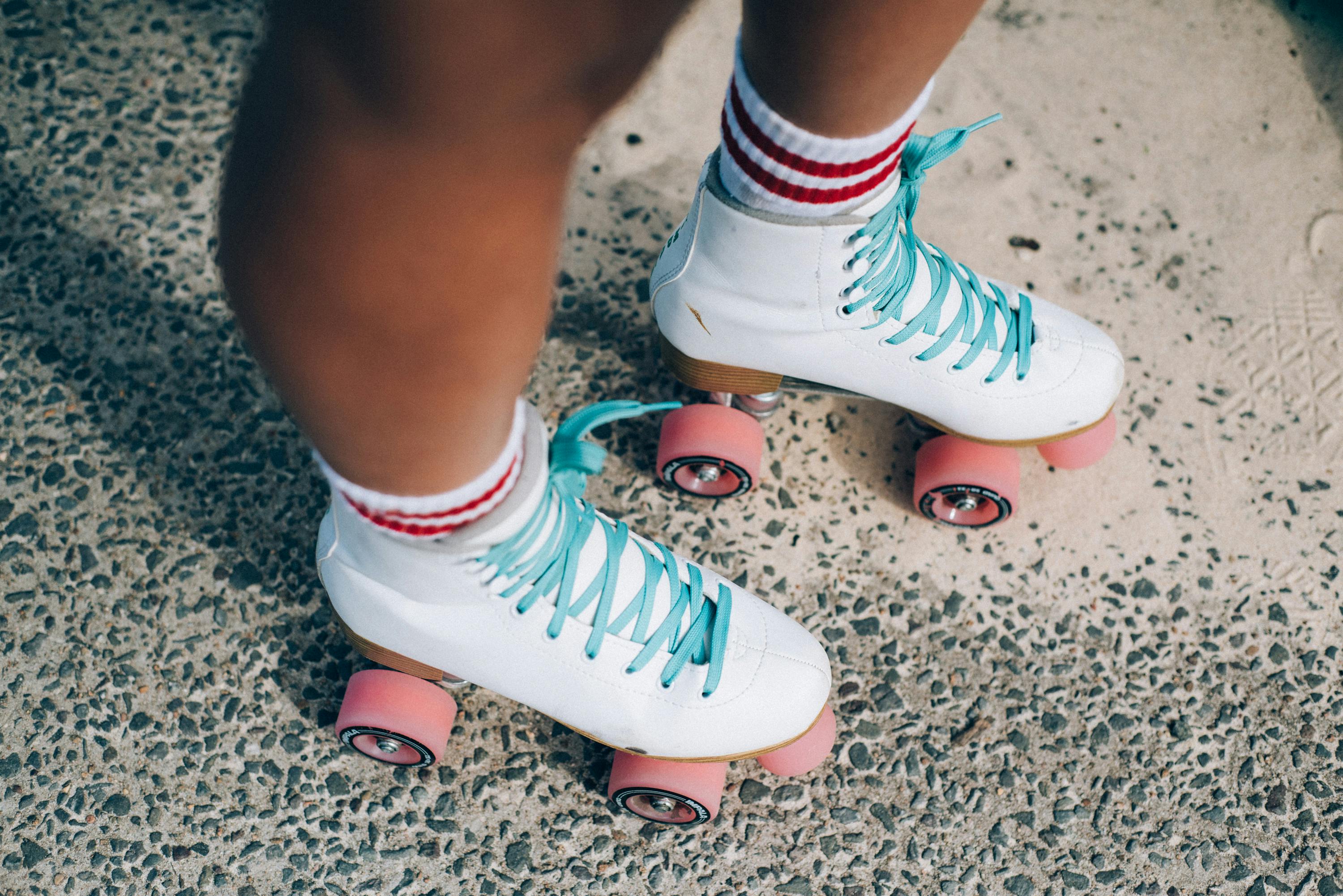When Should I Wear Compression Socks For Plantar Fasciitis

Compression socks are an effective way to manage and reduce pain associated with plantar fasciitis. They can be worn during the day or night, depending on your activity level and the severity of your symptoms. Compression socks can help improve circulation, reduce inflammation, and provide support to the affected area. This article will discuss when you should wear compression socks for plantar fasciitis and what types of compression socks are best for this condition.Plantar Fasciitis is a condition that causes pain in the heel and bottom of the foot. It is caused by inflammation of the plantar fascia, a thick band of tissue that runs across the bottom of the foot and connects the heel bone to the toes. Symptoms include stabbing pain in the heel or bottom of the foot, especially when walking or standing for long periods of time. Treatment for Plantar Fasciitis includes rest, stretching exercises, orthotic devices, and in some cases, surgery.
Compression Socks for Plantar Fasciitis
Compression socks are becoming increasingly popular among those with plantar fasciitis. Compression socks provide support and stability, helping to alleviate the pain associated with plantar fasciitis. They also help to improve circulation and reduce swelling. Compression socks can be worn during physical activity or while resting to help reduce pain and improve comfort.
The benefits of wearing compression socks for plantar fasciitis include increased circulation, reduced swelling, improved stability, and less pain. Increased circulation helps to bring more oxygen and nutrients to the area affected by plantar fasciitis. The increased blood flow helps reduce inflammation, which in turn reduces the pain associated with the condition. The compression also helps improve stability, providing support and preventing further injury or strain on the area affected by plantar fasciitis.
In addition to reducing pain and improving circulation, compression socks can also help prevent future flare-ups of plantar fasciitis. By providing extra support for the foot and ankle, compression socks can help reduce strain on the plantar fascia and prevent future injuries from occurring. Wearing a compression sock during physical activity can also help keep feet from getting too tired or overworked. This can help reduce the risk of further injury or flare-ups of plantar fasciitis.
Overall, wearing compression socks for plantar fasciitis can be beneficial in many ways. They can provide extra support for feet that are prone to injury or strain due to plantar fasciitis, as well as improve circulation and reduce swelling in the area affected by this condition. Compression socks are an easy way to get relief from the pain associated with plantar fasciitis while helping to prevent future flare-ups from occurring as well.
When to Wear Compression Socks for Plantar Fasciitis
Compression socks can be an effective treatment for plantar fasciitis. They help reduce swelling and pain in the foot, and they can also provide extra support and stability. The best time to wear compression socks for plantar fasciitis is when you’re engaged in activities that put extra strain on your feet. This includes running, walking, or standing for extended periods of time. It’s also a good idea to wear them after activities that may have caused inflammation or irritation in your feet, such as long hikes or workouts.
You should also consider wearing compression socks when you’re sitting or lying down for long periods of time. Sitting or lying down can cause your calves to swell, which can lead to plantar fasciitis symptoms like pain and stiffness. Wearing compression socks can help prevent this from occurring by providing extra support and stability to your calves and feet.
It’s important to make sure that the compression socks you choose are the right size for your feet. Too-tight socks can cause further irritation and inflammation, while too-loose socks won’t offer enough support. If you’re unsure of what size is best for you, consult with a doctor or specialist who can help you find the right fit.
Choosing the Right Compression Sock for Plantar Fasciitis
Compression socks are often recommended for the treatment of plantar fasciitis, but it can be tricky to know which type is best for you. The right compression sock will provide support and reduce inflammation while being comfortable enough to wear all day. Here are some tips to help you select the right compression sock:
Consider Your Activity Level
The amount of compression you need depends on your activity level. For those who are more active, a higher level of compression is typically recommended, as it helps keep the feet secure and reduce any impact on the fascia. If you are more sedentary, a lower level of compression may be sufficient.
Choose Quality Materials
Look for socks made with quality materials like moisture-wicking fabric or bamboo blend, which will keep your feet dry and comfortable. It’s also important to look for breathable materials that allow air circulation and won’t trap moisture in the sock.
Pay Attention to Fit
When selecting a compression sock, make sure it fits snugly but isn’t too tight or restrictive. If it’s too loose or too tight, it won’t provide adequate support or relief from pain caused by plantar fasciitis. The sock should also fit correctly around your ankle and arch area.
Select an Appropriate Length
Compression socks come in different lengths such as ankle length, calf length, and knee length. Depending on where you experience pain from plantar fasciitis, choose an appropriate length that provides adequate support to the affected area.
By following these tips, you can select the right compression sock for plantar fasciitis that will provide relief from pain and discomfort while supporting your feet throughout the day.
The Best Time of the Day to Wear Compression Socks for Plantar Fasciitis
Wearing compression socks is an effective way to manage symptoms of plantar fasciitis. Compression socks help reduce swelling and inflammation by providing targeted pressure to the affected area. They also improve circulation, which can help reduce pain and discomfort associated with plantar fasciitis. But when is the best time of day to wear them?
The best time of the day to wear compression socks for plantar fasciitis is when you are most active and likely to experience pain. For some people, this may be in the morning when they first get out of bed and start their day. For others, it may be in the evening after a long day of standing or walking.
Regardless of when you choose to wear them, it is important to make sure that you are wearing them for long enough during the day. The recommended amount of time for wearing compression socks for plantar fasciitis is 8-10 hours a day. This ensures that your feet get adequate support throughout the day and helps reduce inflammation.
In addition to timing your compression sock wear, it is also important to make sure that you are wearing a properly fitting pair of socks. Compression socks should fit snugly but not too tightly, as this can cause further irritation or discomfort in the affected area. If your compression socks are too loose or too tight, consider getting a new pair that fits better before continuing use.
Overall, finding the right combination of timing and fit will help ensure that you are getting maximum relief from your compression socks for plantar fasciitis. If you have any questions about how best to use them or if you experience any adverse reactions after wearing them, be sure to speak with your doctor or physical therapist for further guidance.

How Long Should You Wear Compression Socks for Plantar Fasciitis?
Compression socks are a type of sock designed to help reduce swelling, increase circulation, and provide support to your feet. They are often recommended for people suffering from plantar fasciitis, a condition that causes pain in the heel and arch of the foot. The amount of time that you should wear compression socks for plantar fasciitis depends on a number of factors, including the severity of your condition and how well it responds to treatment.
In general, it is best to wear compression socks as often as possible during the day. This may mean wearing them while walking or when resting at home. Most experts recommend wearing compression socks for at least 8 hours a day. If your condition is more severe, you may need to wear them for longer periods of time. It is important to talk to your doctor about the best way to manage your symptoms and determine how long you should wear compression socks each day.
In addition to wearing compression socks during the day, you may also want to consider wearing them at night while sleeping. Wearing compression socks at night can be beneficial because they can help reduce inflammation and provide extra support while you sleep. If you are struggling with plantar fasciitis pain at night, talk to your doctor about whether wearing nighttime compression socks could be beneficial for you.
When choosing a pair of compression socks for plantar fasciitis, it is important to make sure that they fit correctly in order to maximize their benefits. Compression socks should fit snugly but not too tight – if they feel too tight or uncomfortable in any way, try another size or style until you find one that fits properly. Additionally, make sure that the fabric used in the sock is breathable so that your feet don’t get too hot during use.
Overall, there is no one-size-fits-all answer when it comes to how long you should wear compression socks for plantar fasciitis – it will depend on your individual situation and what works best for you. Talk to your doctor about finding the best way to manage your symptoms with compression therapy and determine how long you should be wearing them each day. With proper use and care, compression socks can be an effective tool in helping reduce pain associated with plantar fasciitis.
What Are the Side Effects of Wearing Compression Socks for Plantar Fasciitis?
Compression socks are a popular treatment option for plantar fasciitis, but like any medical treatment, there can be potential side effects. The most common side effects associated with wearing compression socks for plantar fasciitis are skin irritation, compression marks, and decreased circulation.
Skin irritation is the most common side effect of wearing compression socks. The pressure from the compression can cause the skin to become dry and irritated. To help prevent this, it is important to look for socks that are made from breathable materials. Additionally, you should make sure to regularly wash your socks and apply a moisturizer or ointment if needed.
Compression marks can also occur when wearing compression socks for plantar fasciitis. These marks are usually temporary and will fade over time, but they can be uncomfortable and unsightly. To reduce the risk of developing these compressions marks, you should make sure to select socks that fit properly and evenly distribute pressure throughout your feet.
Decreased circulation is another potential side effect of wearing compression socks for plantar fasciitis. When you wear tight-fitting clothing or accessories, such as compression socks, it can limit blood flow throughout your body. To help prevent this from happening, it is important to only wear the recommended amount of compression recommended by your doctor or physical therapist. Additionally, you should take regular breaks in between wearing your compression socks to ensure that your feet get enough oxygen-rich blood flow throughout the day.
It is important to remember that these side effects are minor compared to the benefits associated with using compression socks for plantar fasciitis treatment. However, if you experience any discomfort or other symptoms while wearing them, it’s always best to contact your doctor right away in order to discuss a different course of treatment that may be more suitable for you.
Wearing Compression Socks for Plantar Fasciitis
Compression socks are an effective tool to help ease the pain of plantar fasciitis. They can be a great way to find relief from the inflammation and discomfort caused by plantar fasciitis. Here are some tips on how to wear compression socks to help with plantar fasciitis:
1. Wear them during the day and take them off at night. Compression socks should be worn during the day when you need extra support, but it is important to take them off at night so your feet can rest and recover.
2. Make sure they fit properly. Compression socks should fit snugly, but not too tight. If they are too tight they can restrict circulation, which can lead to further discomfort. Make sure you get a pair that is the correct size for your feet.
3. Choose a comfortable material. Different materials have different levels of comfort, so make sure you choose a material that is comfortable for you. Cotton, lycra, and spandex are all good options.
4. Wear them with supportive shoes and orthotics if needed. Compression socks work best when combined with supportive shoes and orthotics if necessary. This will provide additional support and protection for your feet.
5. Start slowly and increase gradually as needed. When first starting out with compression socks, it’s important to start slowly and increase gradually as needed in order to prevent any further discomfort or irritation from occurring.
By following these tips, wearing compression socks for plantar fasciitis can be an effective way to find relief from the pain associated with this condition. It is important to remember that everyone’s experience may vary, so it is best to consult a doctor before beginning any new treatment plan for plantar fasciitis or other foot issues.

Conclusion
Compression socks can be an effective way to help alleviate the symptoms of plantar fasciitis. They help reduce inflammation, which is a key factor in reducing the pain and discomfort associated with this condition. Wearing them when you’re up and about can help keep your feet stable and supported, reducing strain on the plantar fascia. Compression socks are also beneficial for those who spend a lot of time on their feet or sitting for long periods.
It’s important to remember that compression socks should only be worn during activities that cause your feet to swell or experience strain. You should not wear them for extended periods of time as this may lead to further complications. Talk to your doctor or podiatrist if you have any questions about wearing compression socks for plantar fasciitis.
In conclusion, wearing compression socks can be an effective way to help alleviate the symptoms of plantar fasciitis and keep your feet stable and supported. However, it’s important to wear them only when needed and avoid extended use as this could lead to further complications. Talk to your doctor or podiatrist if you have any questions about using compression socks for plantar fasciitis.
